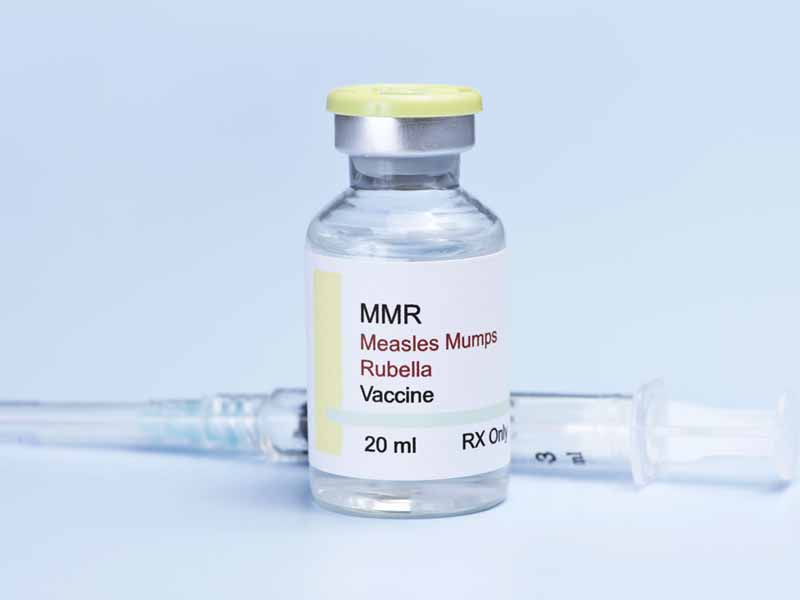In Wake of Measles Outbreaks, CDC Updates 2019 Case Totals
U.S. Keeps Measles Elimination Status
October 09, 2019 02:15 pm News Staff – The New York State Department of Health's Oct. 3 declaration that the state's nearly yearlong measles outbreak is over means the United States has been able to maintain its measles elimination status, which it has held for almost 20 years.
"We are very pleased that the measles outbreak has ended in New York and that measles is still considered eliminated in the United States," said HHS Secretary Alex Azar in an Oct. 4 news release."This result is a credit to the cooperative work by local and state health departments, community and religious leaders, other partners and the CDC.
The agency reported in an Oct. 4 Morbidity and Mortality Weekly Report Early Release that between Jan. 1 and Oct. 1, it received 1,249 reports of measles cases -- the highest annual number since 1992.
And although measles cases were reported in 31 states, 75% of cases were linked to outbreaks in New York City and New York state, most of which were among unvaccinated children in Orthodox Jewish communities.
Additional Details
The CDC said in its MMWR that like other outbreaks that have occurred since measles was declared eliminated in the United States in 2000, most of this year's outbreaks were limited in size and duration because of overall high population immunity and rapid implementation of outbreak control measures by local and state public health authorities.
Story Highlights
The New York State Department of Health's Oct. 3 declaration that the state's lengthy measles outbreak is over means the United States has been able to maintain its measles elimination status, which it has held for nearly 20 years.
The CDC reported a grand total of 1,249 cases of measles nationally during this year's outbreak -- the highest annual number since 1992.
Although measles cases were reported in 31 states, 75% of cases were linked to outbreaks in New York City and New York state.
However, the two sustained outbreaks in New York City and New York state were larger and lasted longer because of three key measles transmission risk factors:
- pockets of low vaccination coverage and variable vaccine acceptance,
- relatively high population density and closed social nature of the affected communities, and
- repeated importations of cases by unvaccinated people traveling internationally and returning to or visiting the affected communities.
According to CDC figures, of the 1,249 cases across the country, the median patient age was 6. The full breakdown by age was
- 13% of cases were in infants younger than 12 months, who are not routinely recommended to receive measles, mumps and rubella vaccine;
- 31% were in children ages 1 to 4 years;
- 27% were in school children ages 5 to 17; and
- 29% were in adults.
Among these patients, 89% were unvaccinated or had unknown vaccination status, and 11% had received one or more doses of MMR vaccine. Eighty-one cases were imported from other countries, with 90% of these cases in unvaccinated people or with unknown vaccination status.
Overall, 10% of patients were hospitalized (median age 6; 20% were infants younger than 12 months), 5% had pneumonia and one patient developed encephalitis; no deaths were reported to the CDC.
A total of 22 outbreaks occurred in 17 states (seven were multistate outbreaks), with outbreaks accounting for 93% of all reported cases, said the MMWR. Eight outbreaks that occurred in underimmunized, close-knit communities accounted for 85% of all cases.
Closely related outbreaks in Orthodox Jewish communities were reported throughout New York. The first began in New York City with an internationally imported case in a returning U.S. traveler; this outbreak lasted 9.5 months and included 702 cases.
The second outbreak, which began in New York state with an internationally imported case in a foreign visitor lasted 10.5 months and included 412 cases.
Addressing Measles in Communities
Robust responses to the New York outbreaks involved an extensive vaccination outreach, with about 60,000 MMR vaccine doses administered in affected communities; tailored communication campaigns; and a massive collaborative effort among local physicians, health centers, advocacy group and religious leaders, along with the use of local public health statutory authorities.
These efforts ended transmission before the 12-month elimination deadline, with the most recent cases of measles rash onset reported on July 15 in New York City and on Aug. 19 elsewhere in the state.
"Both jurisdictions have since passed two incubation periods for measles with no additional reported cases associated with these outbreaks as of Oct. 1; however, continued vigilance is important to ensure that elimination is sustained," the MMWR said.
As for controlling future measles outbreaks, the CDC said that high national MMR vaccination coverage remains the foundation for preventing more widespread measles transmission in combination with rapid implementation of measles control measures.
Because undervaccinated, close-knit communities are at high risk for outbreaks of vaccine-preventable diseases, public health authorities must collaborate with community leaders to prevent outbreaks and limit transmission, the MMWR cautioned.
"A preventive strategy to build vaccine confidence is important," said the agency, "especially one that uses culturally appropriate communication strategies to offset misinformation and disseminate accurate information about the safety and importance of vaccination in advance of outbreaks."
